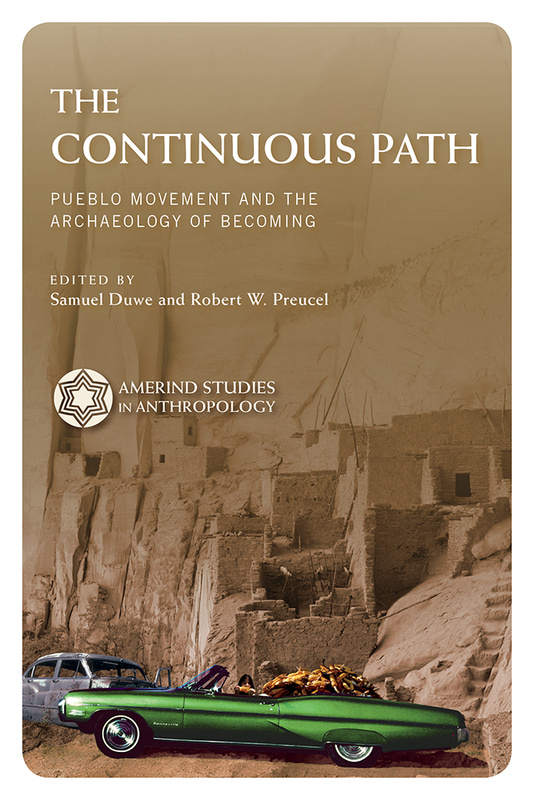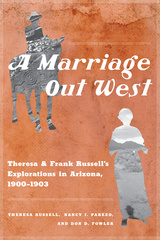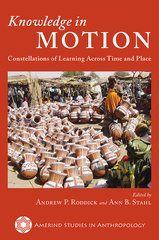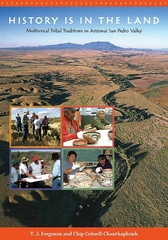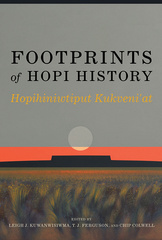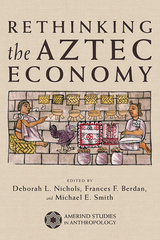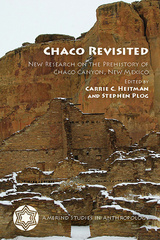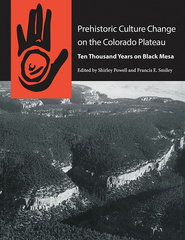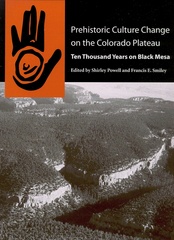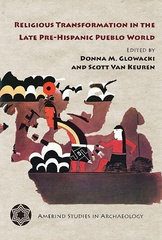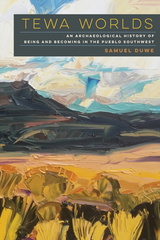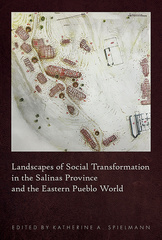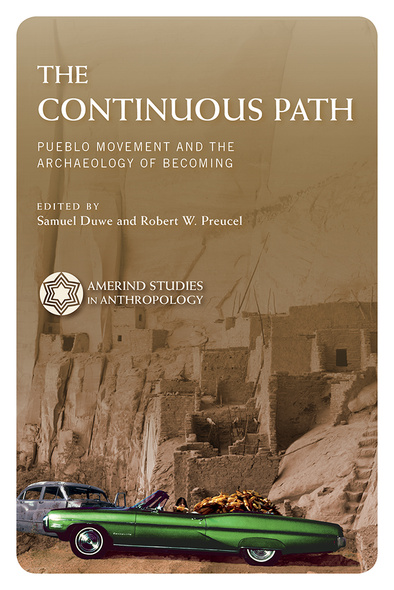
304 pages, 6 x 9
39 b&w illustrations, 3 tables, 8-page color insert
Paperback
Release Date:12 Nov 2024
ISBN:9780816555000
Hardcover
Release Date:16 Apr 2019
ISBN:9780816539284
The Continuous Path
Pueblo Movement and the Archaeology of Becoming
Edited by Samuel Duwe and Robert W. Preucel
SERIES:
The University of Arizona Press
Southwestern archaeology has long been fascinated with the scale and frequency of movement in Pueblo history, from great migrations to short-term mobility. By collaborating with Pueblo communities, archaeologists are learning that movement was—and is—much more than the result of economic opportunity or a response to social conflict. Movement is one of the fundamental concepts of Pueblo thought and is essential in shaping the identities of contemporary Pueblos.
The Continuous Path challenges archaeologists to take Pueblo notions of movement seriously by privileging Pueblo concepts of being and becoming in the interpretation of anthropological data. In this volume, archaeologists, anthropologists, and Native community members weave multiple perspectives together to write histories of particular Pueblo peoples. Within these histories are stories of the movements of people, materials, and ideas, as well as the interconnectedness of all as the Pueblo people find, leave, and return to their middle places. What results is an emphasis on historical continuities and the understanding that the same concepts of movement that guided the actions of Pueblo people in the past continue to do so into the present and the future.
Movement is a never-ending and directed journey toward an ideal existence and a continuous path of becoming. This path began as the Pueblo people emerged from the underworld and sought their middle places, and it continues today at multiple levels, integrating the people, the village, and the individual.
The Continuous Path challenges archaeologists to take Pueblo notions of movement seriously by privileging Pueblo concepts of being and becoming in the interpretation of anthropological data. In this volume, archaeologists, anthropologists, and Native community members weave multiple perspectives together to write histories of particular Pueblo peoples. Within these histories are stories of the movements of people, materials, and ideas, as well as the interconnectedness of all as the Pueblo people find, leave, and return to their middle places. What results is an emphasis on historical continuities and the understanding that the same concepts of movement that guided the actions of Pueblo people in the past continue to do so into the present and the future.
Movement is a never-ending and directed journey toward an ideal existence and a continuous path of becoming. This path began as the Pueblo people emerged from the underworld and sought their middle places, and it continues today at multiple levels, integrating the people, the village, and the individual.
‘THE CONTINUOUS PATH: Pueblo Movement and the Archaeology of Becoming marks a significant turning point in the scholarship of Indigenous peoples by archaeologists…Spanning the entire region of the American Southwest, the eleven chapters are unlike anything scholars of Native America are likely to have read.’—Michael V. Wilcox, Native American and Indigenous Studies
'... this volume is a well-crafted and welcome demonstration of the merits and challenges that accompany decentering Western anthropological theory.'—Kellam Throgmorton, American Antiquity
‘The Continuous Path shows what can be achieved by practicing an Indigenous archaeology that is collaboratively developed and implemented. Such an archaeology can co-produce knowledge that is ethnocritical and humanizing while retaining scientific validity.’—Larry J. Zimmerman, Professor Emeritus, Indiana University–Purdue University Indianapolis
‘This book presents a familiar cultural landscape through a refocused lens that highlights different relationships and insights. I thank the authors for sharing information that led me to new ways of observing, understanding, and—most importantly—humanizing this remarkable landscape.’—Shirley Powell, Crow Canyon Archaeological Center
'The Continuous Path demonstrates the potential of research partnerships among archaeologists and community members, especially when research goals are developed collaboratively, and should provide inspiration for community-based partnerships in many areas of the world.' —Gregson Schachner, Journal of the Royal Anthropological Institute
Samuel Duwe is an assistant professor in the Department of Anthropology at the University of Oklahoma. Robert W. Preucel is director of the Haffenreffer Museum of Anthropology and the James Manning Professor of Anthropology at Brown University. He is the editor of Archaeologies of the Pueblo Revolt: Identity, Meaning, and Renewal in the Pueblo World.
Introduction: Engaging with Pueblo Movement
Robert W. Preucel and Samuel Duwe
Part I. On Becoming
1. Movement as an Acoma Way of Life
Damian Garcia and Kurt F. Anschuetz
2. Movement Encased in Tradition and Stone: Hemish Migration, Land Use, and Identity
Paul Tosa, Matthew J. Liebmann, T. J. Ferguson, and John R. Welch
3. Anshe K’yan’a and Zuni Traditions of Movement
Maren P. Hopkins, Octavius Seowtewa, Graydon Lennis Berlin, Jacob Campbell, Chip Colwell, and T. J. Ferguson
4. Tewa Origins and Middle Places
Samuel Duwe and Patrick J. Cruz
5. To and From Hopi: Negotiating Identity Through Migration, Coalescence, and Closure at the Homol’ovi Settlement Cluster
Samantha G. Fladd, Claire S. Barker, E. Charles Adams, Dwight C. Honyouti, and Saul L. Hedquist
Part II. Always Becoming
6. Seeking Strength and Protection: Tewa Mobility During the Pueblo Revolt Period
Joseph Aguilar and Robert W. Preucel
7. Apache, Tiwa, and Back Again: Ethnic Shifting in the American Southwest
Severin Fowles and B. Sunday Eiselt
8. Moving Ideas, Staying at Home: Change and Continuity in Mid-Eighteenth-Century Tewa Pottery
Bruce Bernstein, Erik Fender, and Russell Sanchez
9. Toward the Center: Movement and Becoming at the Pueblo of Pojoaque
Samuel Villarreal Catanach and Mark R. Agostini
10. Getting Accustomed to the Light
Joseph H. Suina
Commentary: Pueblo Perspectives on Movement and Becoming
Paul Tosa and Octavius Seowtewa
Contributors
Index

